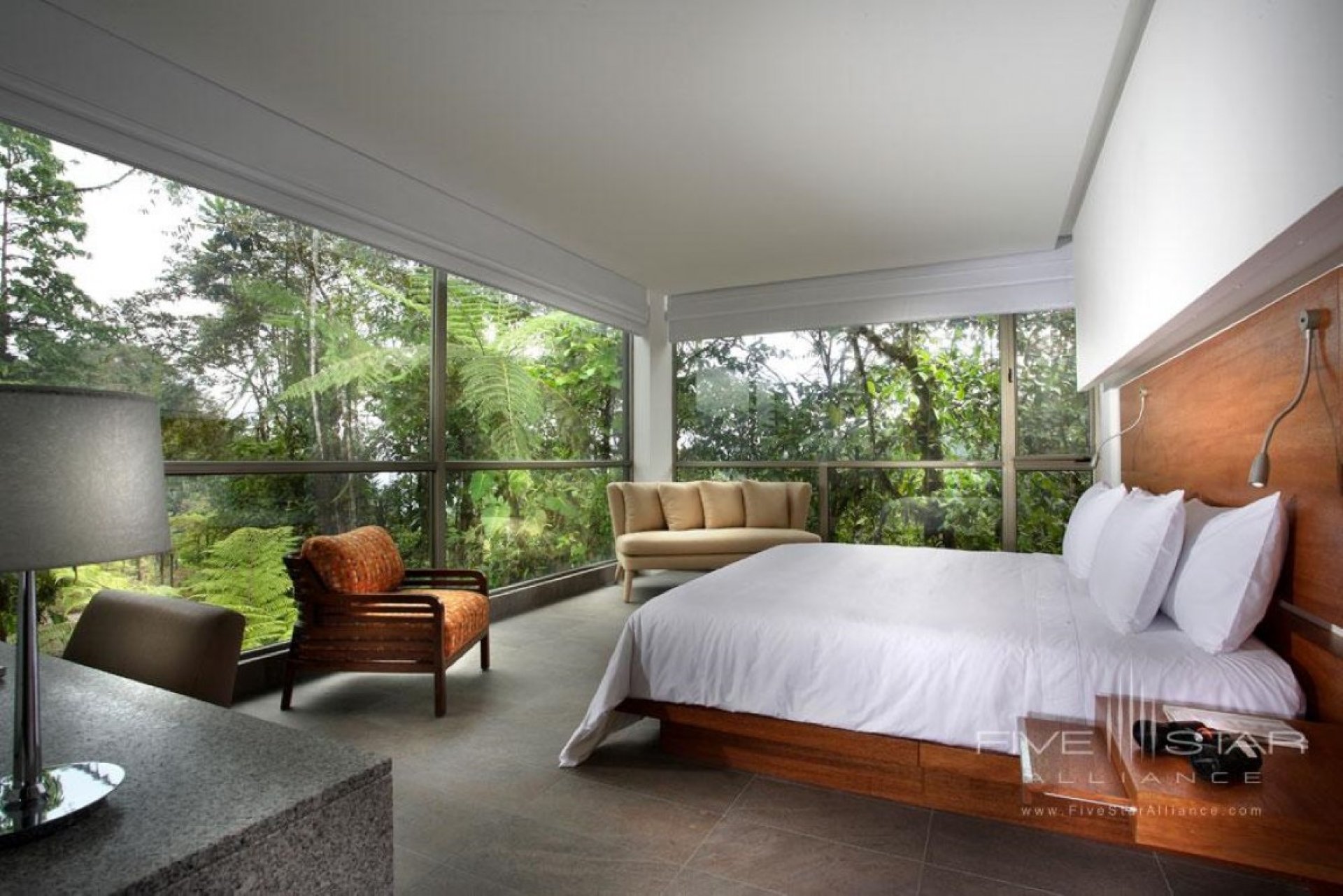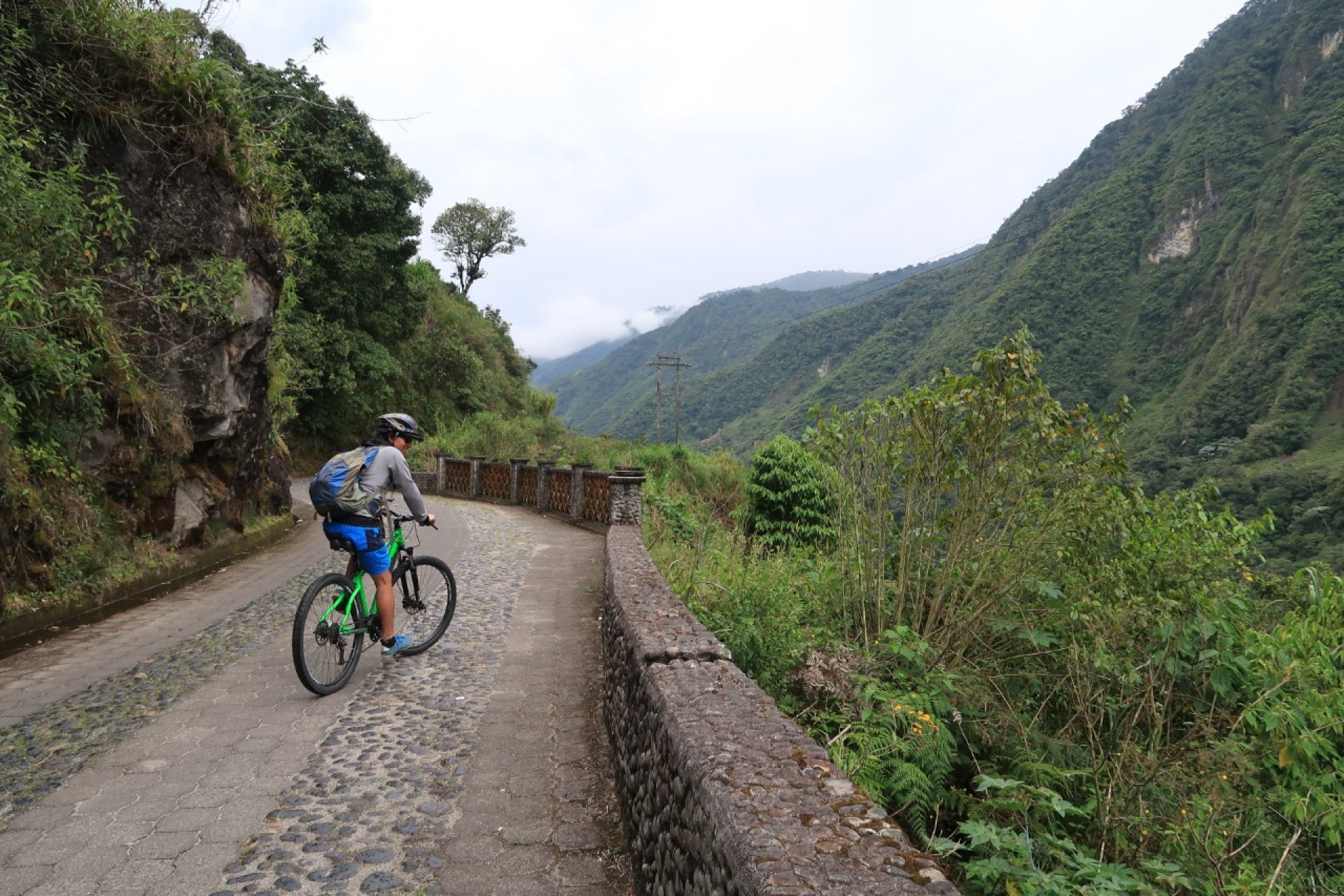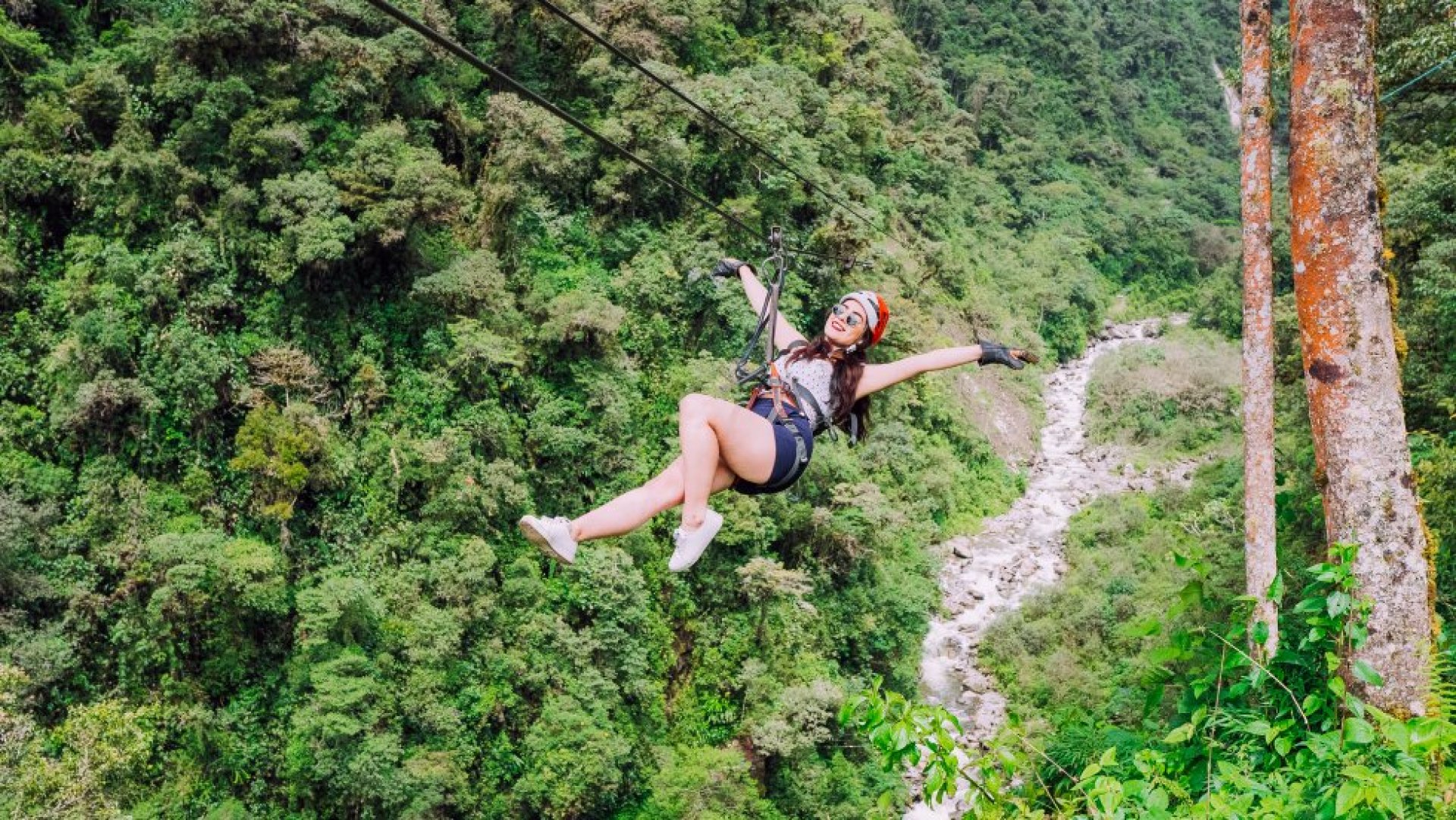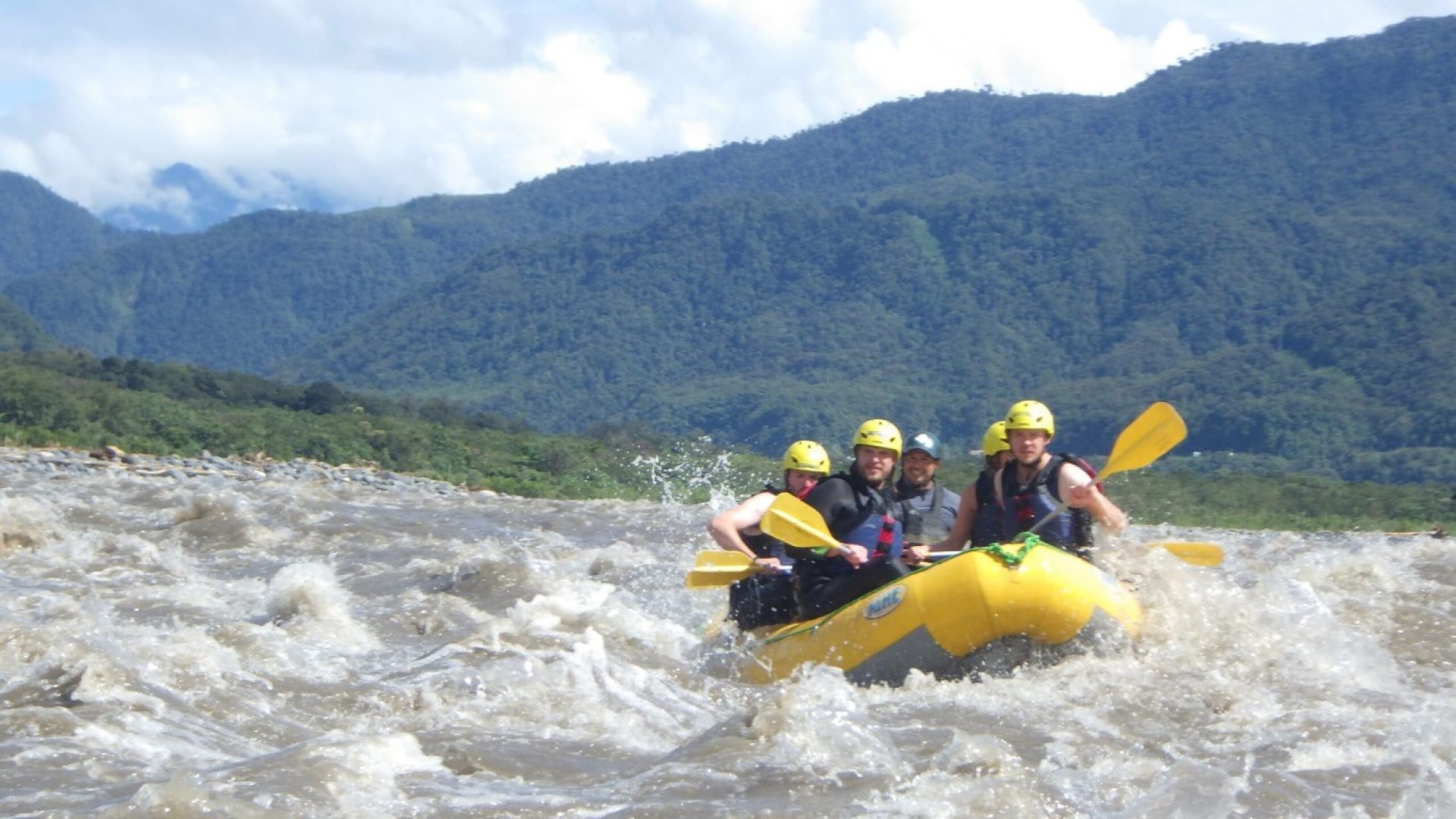Luxury Rooms | Casa Gangotena
These rooms are located on the first, second, and third floors.

These rooms are located on the first, second, and third floors.

The lodge's three Yaku Suites (Yaku is a Kichwa word meaning “water”) are perfect for couples seeking a luxurious and intimate experience.

The Route of the Waterfalls in Baños de Agua Santa is one of the most impressive and popular tourist trails in Ecuador, offering an unforgettable experience of connecting with nature. This journey stretches along the Baños-Puyo road, crossing the majestic transition between the Andes and the Amazon.

Enjoy nature with your family, friends, or partner in inflatable kayaks on a calm river. Immerse yourself in the natural beauty of the jungle, paddling through crystal-clear waters. This is recommended for those without experience who are seeking a new adventure!

. This place offers a unique experience that combines adrenaline and nature, allowing visitors to slide at high speeds along cables suspended in the air over the lush Andean mountain landscape.

The Pastaza River, located in the central region of Ecuador, is one of the most popular rivers for rafting in the country, especially in the surroundings of Baños de Agua Santa.
Ecuador, located along the equator and guarded by the Andes, is a paradise for mountaineering enthusiasts. However, before venturing to conquer its highest peaks like Cotopaxi or Chimborazo, acclimatization is essential. Fortunately, the country offers an ideal selection of mountains and hills to prepare your body and mind for extreme altitudes. Below, we take you on a journey through the best mountains for acclimatization, where you can enjoy breathtaking landscapes along the way.
1. First Step: Pasochoa Volcano (4,210 m)
Located just an hour from Quito, Pasochoa Volcano is an excellent starting point for those looking to acclimatize. Its ascent is beginner-friendly, with trails cutting through a cloud forest rich in biodiversity. From the summit, you’ll be rewarded with spectacular views of Cotopaxi and the surrounding valleys. The fresh air and moderate altitude will help your body gradually adjust.
Tip: Bring layered clothing, as the weather can change quickly, and don’t forget your camera to capture the wildlife.
2. Raising the Bar: Rucu Pichincha (4,698 m)
Rucu Pichincha, known as "the old one," is part of the majestic Pichincha range overlooking Quito. You can take the city’s cable car up to 4,050 meters and begin your hike from there. While the ascent isn’t technical, it offers a good workout on varied terrain, including sandy and rocky trails.
This active volcano provides an unforgettable experience, not only for its landscapes but also for the thrill of standing on Ecuador’s geological history.
Fun Fact: Locals use Rucu Pichincha as their training ground for higher peaks.
3. Exploring the Andes: Imbabura (4,621 m)
Known as "Father Imbabura," this sacred mountain is near Otavalo, famous for its indigenous market. Climbing Imbabura is not just a physical challenge but also a cultural experience. The trail leads through Andean grasslands and rocky paths that test your skills without being overly demanding.
From the summit, you’ll enjoy stunning views of San Pablo and Yahuarcocha Lakes, offering a striking contrast between water and mountains.
Cultural Tip: Talk to locals about the mountain's legends; their ancestral stories will amaze you.
4. Hiking Through the Paramo: Corazón Volcano (4,790 m)
Situated in the Cotopaxi province, Corazón Volcano is less frequented, making it a peaceful choice for acclimatization. Its route varies, passing through paramo grasslands filled with unique vegetation before ascending to more exposed rocky terrain.
From its summit, you’ll enjoy breathtaking views of other Andean giants, such as Iliniza Sur and Chimborazo. It’s an excellent physical and mental training ground for higher peaks.
Recommendation: Start your hike early in the morning to avoid afternoon clouds.
5. The Perfect Prelude: Iliniza Norte (5,126 m)
If you’re looking for a challenging yet manageable acclimatization hike, Iliniza Norte is your best bet. One of the twin Iliniza peaks, it’s considered technically straightforward, though the altitude requires significant effort. This climb is ideal preparation for Cotopaxi.
The views include the Iliniza Sur glacier and a horizon of mountains that will leave you breathless (both figuratively and literally).
Pro Tip: Hire a certified guide to ensure a safe and enriching experience.
6. Solitude and Beauty: Sincholagua (4,893 m)
Sincholagua is a hidden gem in the Ecuadorian Andes, perfect for those seeking tranquility and unique landscapes. Its proximity to Cotopaxi National Park provides stunning views of the volcano and the Andean plains. The ascent is challenging but not technical, traversing vast paramos before reaching rocky terrain near the summit.
Recommendation: This mountain is perfect for experiencing a remote setting. Be sure to bring enough water and energy-packed snacks.
7. The Friendly Giant: Rumiñahui (4,721 m)
This extinct volcano, located within Cotopaxi National Park, offers one of the most accessible acclimatization hikes. Its summit provides a privileged viewpoint of Cotopaxi and the surrounding valleys.
The hike passes through typical paramo landscapes, ideal for spotting Andean birds and enjoying the fresh mountain air.
Interesting Fact: The name Rumiñahui means "stone face" in Kichwa, evoking legends of the brave indigenous leader.
Tip: Perfect for a day trip from Quito or Latacunga.
8. Double Beauty: Fuya Fuya (4,263 m)
Nestled beside Mojanda Lagoon, Fuya Fuya combines stunning landscapes with a moderate hike. Its trails are surrounded by lush paramo, and from the summit, you can admire panoramic views of the lagoon and nearby mountains like Cayambe. Its moderate altitude makes it an excellent choice to start your acclimatization process.
Advice: After the hike, relax by Mojanda Lagoon and soak in the serenity of the place.
Acclimatization in Ecuador: More Than Physical Preparation
Acclimatizing isn’t just about preparing your body for high altitudes; it’s an opportunity to connect with nature, learn about local culture, and explore lesser-known corners of this wonderful country. Each mountain has its unique character, challenges, and rewards.
Final Preparations:
Exploring Ecuador’s mountains for acclimatization not only prepares you for higher summits but also offers an unforgettable experience in the heart of the Andes.
Ready for the challenge?
Pack your boots and embark on this adventure!
Ecuador, located along the equator and guarded by the Andes, is a paradise for mountaineering enthusiasts.